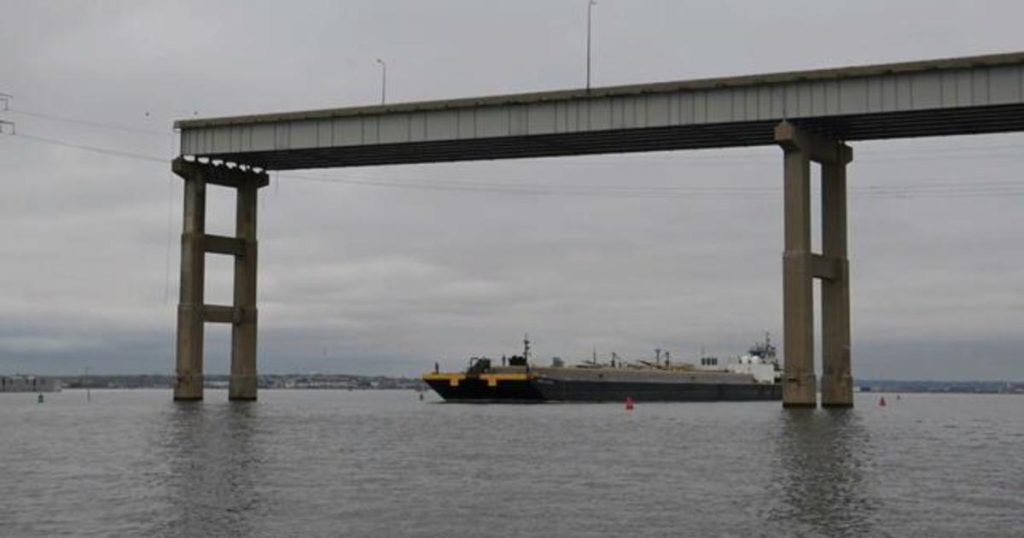Smaller vessels in Baltimore are now able to pass through an alternate channel for the first time since the collapse of the Francis Scott Key Bridge. The bridge, which collapsed last week, caused a major disruption for maritime traffic in the area. The alternate channel is now allowing smaller vessels to navigate around the wreckage and continue their journeys. This development comes as a relief to boat operators and maritime businesses in the area who were impacted by the bridge collapse.
The bridge collapse last week resulted in a tragic loss of life and caused significant damage to the infrastructure. The wreckage of the bridge has blocked the main channel, preventing larger vessels from passing through. As a result, maritime traffic in the area was severely disrupted, impacting businesses and shipping operations. The opening of the alternate channel for smaller vessels is a positive step towards restoring normalcy to the maritime industry in Baltimore.
The alternate channel was created to provide a workaround for smaller vessels that were unable to pass through the main channel due to the wreckage of the bridge. The channel allows boats to safely navigate around the debris and continue their journeys without being hindered by the collapsed bridge. This development has been welcomed by boat operators and maritime businesses, who rely on the efficient movement of vessels in the area for their operations.
The opening of the alternate channel marks a significant milestone in the recovery efforts following the bridge collapse. It demonstrates the resilience and resourcefulness of the maritime industry in Baltimore, which has quickly adapted to the challenges posed by the bridge collapse. By providing a solution for smaller vessels to pass through the area, the alternate channel is helping to minimize the impact of the bridge collapse on maritime operations in the region.
The alternate channel is likely to remain in place until the wreckage of the bridge is fully cleared and the main channel is reopened for all vessels. In the meantime, smaller vessels can continue to use the alternate channel to navigate through the area and avoid the debris from the collapsed bridge. The successful implementation of the alternate channel is a testament to the collaboration and cooperation among various stakeholders in the maritime industry, who have worked together to find a solution to the challenges posed by the bridge collapse.
Overall, the opening of the alternate channel for smaller vessels in Baltimore is a positive development that is helping to restore normalcy to the maritime industry in the area. By providing a workaround for boats to navigate around the wreckage of the Francis Scott Key Bridge, the alternate channel is enabling maritime businesses to continue their operations and mitigate the impact of the bridge collapse. The successful implementation of the alternate channel highlights the resilience and adaptability of the maritime industry in Baltimore, and serves as a testament to the collaborative efforts of all stakeholders involved in the recovery efforts.


